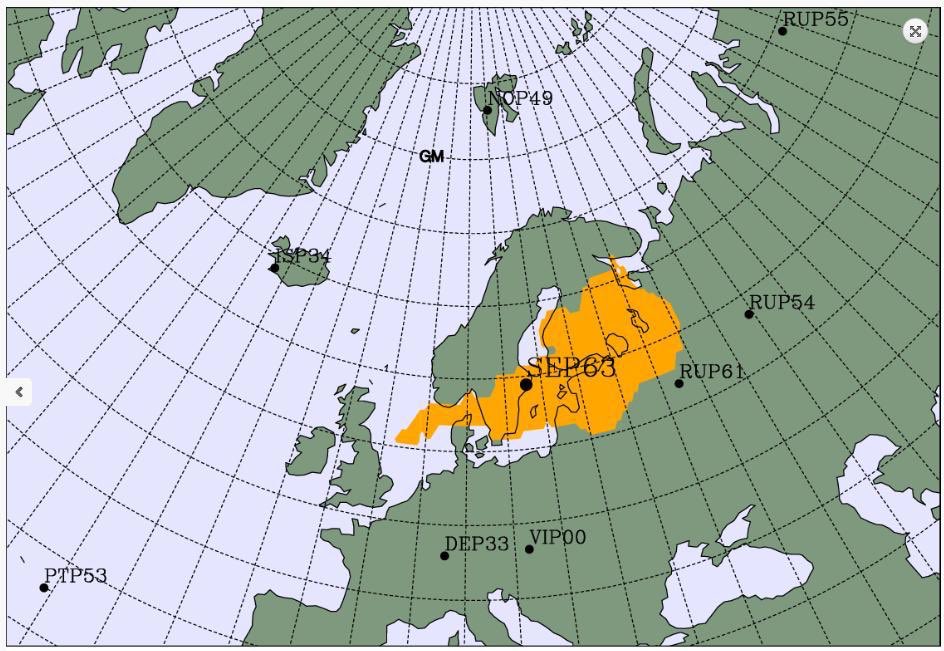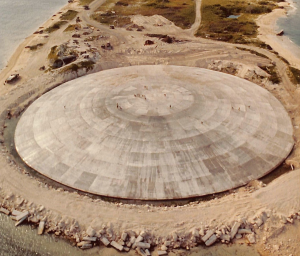
Lassina Zerbo, the Executive Secretary of the Comprehensive Nuclear Test Ban Treaty Organization (CTBTO), is sharing news that sensors in Sweden have detected three isotopes typically associated with nuclear fission. Elevated levels of Cs-134, Cs-137, and Ru-103 have been found, although they are not yet at a level that is harmful for human health. Zerbo shared a map of the possible source region preceding detection of the radioactive cloud. This event was detected on June 23 and shared with the public last night.
“These isotopes are most likely from a civil source. We are able to indicate the likely region of the source, but it’s outside the CTBTO’s mandate to identify the exact origin,” Tweeted Zerbo after the radioactive cloud was detected.
Within this region are two nuclear power plants: Loviisan Voimalaitos in Finland and Leningradskaya Aes in Russia.
A power unit was due to start at the Leningradskaya Aes site this summer, but there are no additional details coming from Russia about the status of that plant or what’s what with it’s scheduled start-up.
On June 16 and 17, Finland’s Radiation and Nuclear Safety Authority (STUK) said it has found small amounts of radioactive isotopes of cobalt, ruthenium and caesium in air samples collected in Helsinki; radiation authorities in Sweden and Norway reported similar findings at the time.
While the detected radioactive material was too small to pose an immediate health risk, the source remains unknown.
A week earlier, from June 2-8, iodine-131 was measured at the two air filter stations Svanhovd and Viksjøfjell near Kirkenes , which is a short distance from Norway’s border to Russia’s Kola Peninsula. The same days, on June 7 and 8, the CTBTO-station at Svalbard measured tiny levels of the same isotope.
Authorities in Europe say they’re exchanging data with each other, although officials in Russia haven’t been completely forthcoming on any situation that may or may not be unfolding there.
On April 26, 1986, the Chernobyl Nuclear Power Plant near the city of Pripyat in the Ukraine suffered an explosion and nuclear disaster. While the Soviet Union didn’t make the disaster known to the public to the global community for days, the Forsmark Nuclear Power Plant in Sweden, detected a spike in radiation there on April 28. That day, the Swedish government contacted the Soviet government to inquire about whether there had been a nuclear accident in the Soviet Union; the Soviets initially denied it, and it was only after the Swedish government suggested they were about to file an official alert with the International Atomic Energy Agency, that the Soviet government admitted an accident took place at Chernobyl. The extent of the disaster there became only known weeks later as the situation deteriorated there.
While the isotopes arriving in Europe this month are concerning, authorities stress that levels in Europe are still not at dangerous levels. The hunt to discover the source of this radioactive cloud and any problems at its source remain.

Enewetak Atoll. This dome was used as a burial pit to inter 84,000 cubic meters of radioactive soil scraped from the various contaminated Enewetak Atoll islands from U.S. nuclear weapons testing. Image: US Department of Defense
While Europe is trying to get to the bottom of the nuclear incident responsible for this radioactive cloud, America is still trying to deal with their own radioactive disaster in the Pacific Ocean. The Runit Dome on Runit Island in the Enewetak Atoll is failing, allowing for radioactive waste tied to U.S. nuclear weapons testing to leak into the Pacific Ocean.